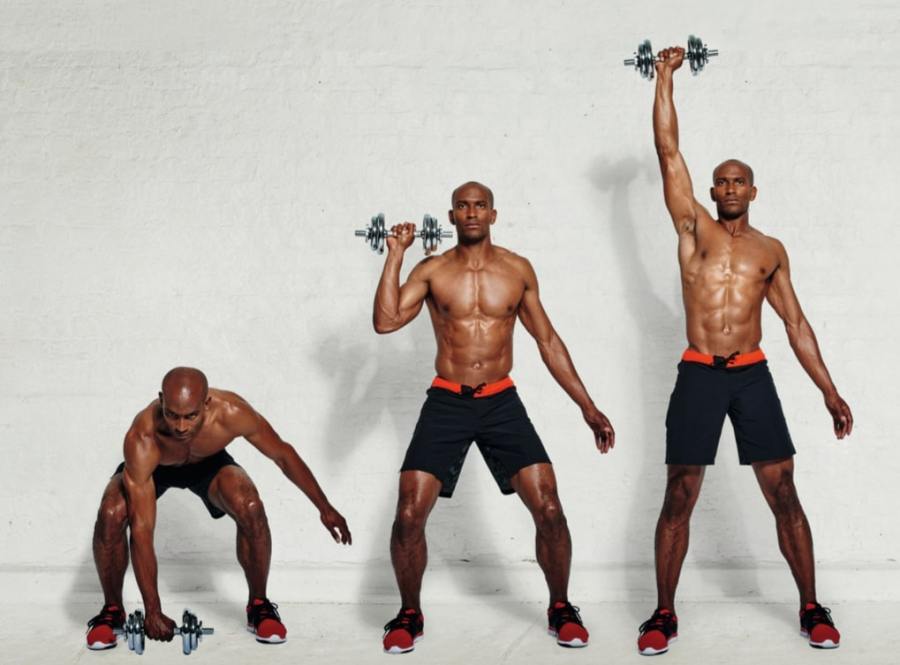Elevate Your Fitness Comprehensive Dumbbell Workout Routine

Introduction
In the realm of fitness, dumbbells are like the Swiss Army knives – versatile, effective, and capable of delivering a full-body workout that leaves you feeling invigorated and accomplished. Let’s delve into the details of a full body workout plan centered around dumbbells and explore how it can help you sculpt a stronger, more toned physique.
Understanding the Basics
Dumbbells are a fundamental piece of equipment in any gym or home workout setup. These versatile weights come in various sizes and can be used to target every major muscle group in the body. From bicep curls and shoulder presses to squats and lunges, the possibilities are endless when it comes to designing a full body workout plan with dumbbells.
Maximizing Efficiency
One of the key advantages of a full body workout plan with dumbbells is its efficiency. By incorporating compound exercises that engage multiple muscle groups simultaneously, you can maximize your time in the gym and achieve a comprehensive workout in a shorter amount of time. This means less time spent exercising and more time enjoying the benefits of a stronger, fitter body.
Tailoring Your Workout
Another benefit of using dumbbells in your full body workout plan is the ability to tailor your workout to suit your individual needs and goals. Whether you’re looking to build muscle, improve strength, or increase endurance, there are countless exercises you can perform with dumbbells to target specific areas of the body and achieve your desired results. Plus, you can easily adjust the weight to suit your fitness level and gradually increase the resistance as you progress.
Structuring Your Routine
When designing a full body workout plan with dumbbells, it’s important to structure your routine to ensure a balanced workout that targets all major muscle groups. Start with a dynamic warm-up to prepare your body for exercise and prevent injury. Then, choose a combination of upper body, lower body, and core exercises to include in your workout, making sure to incorporate both strength and cardio elements. Finally, cool down with some stretching to improve flexibility and aid in muscle recovery.
Progression and Variation
To continue seeing progress and prevent plateaus, it’s important to incorporate progression and variation into your dumbbell workouts. This can be achieved by increasing the weight or number of repetitions, trying new exercises or variations, or changing the tempo or intensity of your workouts. By continually challenging your muscles in new ways, you can keep your workouts fresh and exciting while promoting ongoing progress and improvement.
Staying Consistent
Consistency is key when it comes to seeing results from your full body workout plan with dumbbells. Aim to exercise regularly, ideally at least three to four times per week, to maintain momentum and make progress towards your fitness goals. Remember to listen to your body and give yourself permission to rest and recover when needed to prevent burnout and injury. With dedication and perseverance, you can achieve remarkable results and unlock your full potential with a full body workout plan centered
Sculpting Success Weight Training for Effective Weight Loss
Sculpting Success: Unveiling the Power of Weight Training for Weight Loss
Embarking on a weight loss journey often involves exploring various exercise modalities, and weight training stands out as a powerful tool for achieving success. Let’s delve into the world of weight training for weight loss, shedding light on how lifting weights can sculpt not only your physique but also your path to a healthier you.
The Metabolic Boost: Igniting Calorie Burn
Weight training goes beyond the calorie burn achieved during the workout itself. One of its unique advantages is the metabolic boost it provides long after you’ve left the gym. As your body repairs and builds muscle post-exercise, it expends energy, contributing to an elevated metabolic rate. This post-workout calorie burn creates an effective pathway for weight loss.
Muscle Matters: The Foundation of Weight Loss
Muscles play a pivotal role in the weight loss process. Weight training facilitates muscle development, and more muscle translates to a higher resting metabolic rate. This means that even at rest, your body burns more calories. Building and preserving lean muscle through weight training becomes a strategic approach to not only losing weight but also maintaining a healthy body composition.
Farewell, Fat: Burning Calories Efficiently
Weight training engages multiple muscle groups simultaneously, creating a significant demand for energy. This efficient calorie burn contributes to fat loss, as the body taps into stored fat reserves to meet the increased energy requirements. It’s a dynamic process that promotes targeted fat reduction and improves overall body composition.
Afterburn Effect: Maximizing Workout Benefits
The afterburn effect, scientifically known as excess post-exercise oxygen consumption (EPOC), is heightened after weight training sessions. This phenomenon involves the body continuing to burn calories post-exercise to restore oxygen levels and repair muscle tissue. Leveraging the afterburn effect through weight training amplifies the overall impact of your workout on weight loss goals.
Metabolic Flexibility: Adapting to Change
Weight training enhances metabolic flexibility, allowing the body to efficiently switch between energy sources. This flexibility is particularly beneficial for weight loss, as the body becomes adept at utilizing both stored fat and glucose for fuel. As a result, weight training promotes a more efficient and adaptable metabolism, crucial for sustained weight loss success.
Hormonal Harmony: Regulating Weight-Loss-Friendly Hormones
Weight training influences the release of hormones that play a key role in weight loss. Growth hormone and testosterone, both elevated during weight training, contribute to muscle development and fat metabolism. Additionally, weight training helps regulate insulin levels, promoting better blood sugar control and reducing the likelihood of excess fat storage.
Injury Prevention: A Foundation for Consistency
Consistency is a cornerstone of successful weight loss, and weight training contributes to it by fostering injury prevention. Building strength and stability through resistance training reduces the risk of injuries that may hinder your fitness journey. A consistent, injury-free approach ensures that you can adhere to your weight loss regimen over the long term.
Mind-Body Connection: Empowering Your Journey
Weight training is not solely a physical endeavor; it nurtures the mind-body

